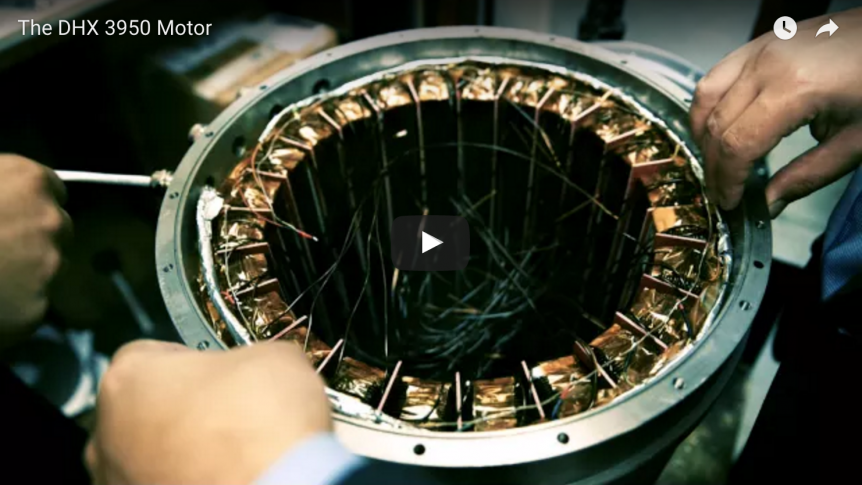DHX Electric Machines, Inc. has partnered with Deltawing Technologies, Inc. and signed an agreement granting DeltaWing worldwide rights to make, use and sell DHX electric motors and components specifically designed for automotive applications, according to greencarcongress.com. Deltawing is an outgrowth of Panoz Racing, a team often associated with Garage 56 at LeMans, a non-standard entrant allowed for its innovative approach to reaching high speeds. Their latest efforts have turned to achieving the CAFE (in this case Corporate Average Fuel Economy) goals of the federal government for 54.5 miles per gallon by 2025. The swoopy car follows the look of Nissan’s Garage 56 entrant which raced (but not for long) in the 2014 Le Mans race. It had topped 300 kilometers per hour (186 mph) on electric power alone, the first car ever to lap Le Mans on electric power only. Deltawing’s four-seat “economy car” looks a great deal like Nissan’s racer, and will use a DHX motor, compact and light …
June is a Happy Month for Electric Motorsports
With only half the month gone and the Pikes Peak International Hill Climb scheduled on its last week, June 2014 has seen records crumble at the Isle of Man TT and hybrid electrical technology dominate at the 80th running of the 24 Hours of Le Mans. The electric part of the classic road race on the tight little island between Britain and Northern Ireland saw new records for the 37 mile spin around the southern roadways – like the Le Man circuit, otherwise public roads usually dominated by farm vehicles and passenger cars. Ohio State University’s Buckeye Racing Team ran a modified Honda CBR1000RR frame with a motor by Roman Susnik, the Slovenian who also designed the motors used in the Pipistrel G2 self-launching motorglider. They ran a respectable third place, a great accomplishment for a college team up against the might of the winning Honda Mugen. John McGuinness rode that $4.3 million racer to set a lap record of …
24 hours of Le Mans 2013: Previewing the Future
The 2013 24 Hours of Le Mans ended Sunday morning with hybrid racers taking the first five places. Audi’s R18 e-tron Quattro took first, third and fifth places, with Toyota’s TS030 taking second and a well-earned fourth place. The winner averaged over 149 mph for the 24 hours. According to Wikipedia, Audi’s R18 e-tron quattro is a hybrid version of the R18 ultra, with a Williams Hybrid Power-designed flywheel accumulator system for energy storage which delivers 500 kiloJoules (about 10.8 horsepower for one second) to the front wheels via an electric motor, giving the car four (quattro) wheel drive. The system, as per the regulations, is only available at speeds above 120 km/h (75 mph). The car is fitted with a smaller 58 liter (15.3 U. S. gallon) fuel tank, which might account for some of the 34 pit stops for the winning entry, despite lower fuel consumption promised by the hybrid system. The e-tron has six driver selectable automatic modes on the steering wheel, allowing short …
24 Hours of LeMans – Hybrids, KERS and High Speeds
The 24 Hours of LeMans is the quintessential motorsports event every year, pitting the top automobile racing teams in the world against the endurance trial of completing a full day’s run at “full chat,” as the British used to say, overcoming weather, wear and tear, and competing drivers. Traditionally populated with internal-combustion gasoline engine powered racers in many sizes and classifications, the race has seen inroads with turbo-diesels, hybrids, and hints there may be soon full electric competitors. The most advanced class this year comprised a collection of formerly exotic technologies, with a variety of approaches to going fast. The race’s official web site explains, “The LM P1 class (Le Mans Prototype 1) welcomes machines at the leading edge of progress. All ideas are welcome: front or rear engines, petrol or diesel, turbocharged or atmospheric … But the big trend right now is the emergence of systems for kinetic energy recovery (KERS). Storage batteries or flywheel, returns energy to front …

